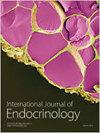Na-Glucose Cotransporter 2 抑制剂在糖尿病治疗中的光与影:基于临床经验的改进要点
IF 2.3
4区 医学
Q3 ENDOCRINOLOGY & METABOLISM
引用次数: 0
摘要
我们分析了 Na 葡萄糖共转运体 2 抑制剂(SGLT2-I)对本院就诊糖尿病患者的影响。研究包括 236 名接受 SGLT2-I 单独治疗或与同种糖尿病药物一起治疗至少两年的患者。我们通过重复方差分析(ANOVA)分析了患者糖化血红蛋白A1c(HbA1c)的超时变化,并评估了治疗效果。治疗后的前六个月,HbA1c 水平明显下降。之后,HbA1c 水平趋于平稳,并在接下来的两年中略有上升。治疗 6 个月后,HbA1c 的平均值(标度)为 8.19 (1.46) %;平均值下降了 0.91%,轻度 DM2 患者的 HbA1c 降幅未低于 8.0%。总体而言,只有轻微改善。我们使用以是否有改善为目标变量的模型和几个解释变量进行了多变量逻辑回归分析。Na 和 Hct 是重要因素。治疗六个月后,高滤过组的 eGFR 显著下降。即使在非高滤过组,eGFR 的年下降率也比健康受试者快,这可能是 SGLT2-I 治疗中肾脏清除率的一个特征。总之,SGLT2-I 是一种消除高滤过的优良抗糖尿病肾保护剂,但遗憾的是,单靠 SGLT2-I 并不足以降低血糖水平。SGLT2-I 与胰岛素或胰岛素促泌剂一起使用时,会增强胰岛素抵抗,诱发高胰岛素血症,加重 2 型糖尿病。相比之下,SGLT2-I 配合非胰岛素抗糖尿病药物和低碳水化合物饮食可能会带来更好的效果。本文章由计算机程序翻译,如有差异,请以英文原文为准。
Light and Shadow of Na-Glucose Cotransporter 2 Inhibitors in the Treatment of Diabetes Mellitus: Points for Improvement Based on Our Clinical Experience
We analyzed the effect of Na-glucose cotransporter 2 inhibitors (SGLT2-I) in diabetic patients visiting our hospital. The study included 236 patients treated with SGLT2-I alone or with codiabetic drugs for at least two years. We analyzed overtime changes in glycosylated hemoglobin A1c (HbA1c) in the patients by repeated analyses of variance (ANOVA) and evaluated the therapeutic effect. HbA1c levels decreased significantly in the first six months after treatment. Afterward, they leveled off and increased slightly over the next two years. Six months after treatment, the mean (SD) of HbA1c was 8.19 (1.46) %; the mean difference dropped by 0.91%, and HbA1c in mild DM2 did not drop by below 8.0%. Overall, there was only a slight improvement. We performed multivariate logistic regression analysis using a model with or without improvement as the objective variable and several explanatory variables. Na and Hct were significant factors. They increased considerably over six months and then leveled off. eGFR significantly reduced in the hyperfiltration group six months after treatment. The annual decline rate in eGFR was also faster, even in the nonhyperfiltration group than in the healthy subjects, which may be a characteristic of renal clearance in SGLT2-I treatment. In conclusion, SGLT2-I is an excellent antidiabetic, nephroprotective agent to eliminate hyperfiltration, but unfortunately, SGLT2-I alone does not have enough power to reduce blood glucose levels. SGLT2-I, with insulin or insulin secretagogues, enhances insulin resistance, induces hyperinsulinemia, and exacerbates type 2 DM. In contrast, SGLT2-I, with noninsulin antidiabetic agents and a low-carbohydrate diet, may bring better results.
求助全文
通过发布文献求助,成功后即可免费获取论文全文。
去求助
来源期刊

International Journal of Endocrinology
ENDOCRINOLOGY & METABOLISM-
CiteScore
5.20
自引率
0.00%
发文量
147
审稿时长
1 months
期刊介绍:
International Journal of Endocrinology is a peer-reviewed, Open Access journal that provides a forum for scientists and clinicians working in basic and translational research. The journal publishes original research articles, review articles, and clinical studies that provide insights into the endocrine system and its associated diseases at a genomic, molecular, biochemical and cellular level.
 求助内容:
求助内容: 应助结果提醒方式:
应助结果提醒方式:


